What If? (16 page)
Authors: Randall Munroe
Q.
What if you were flashing your BIOS during a thunderstorm and you got hit by lightning?
A.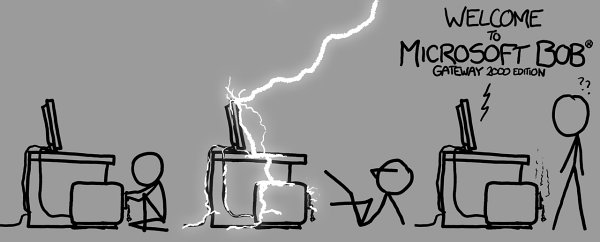
- 1
Or a real one, for that matter.
- 2
Paleontologists estimate he stood nearly 5 meters tall at the shoulder.
- 3
While it’s called a “return stroke,” charge is still flowing downward. However, the discharge appears to propagate upward.
Th
is effect is similar to how when a traffic light turns green, the cars in front start
moving, then the cars in back, so the movement appears to spread backward.
- 4
For safety reasons, do not use a real sphere.
weird (and worrying) questions from the what if? INBOX, #4

Q.
Would it be possible to stop a volcano eruption by placing a bomb (thermobaric or nuclear) underneath the surface?
—Tomasz Gruszka
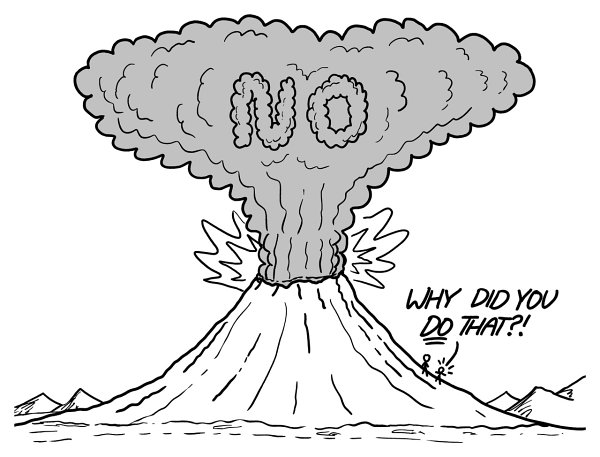
Q.
A friend of mine is convinced that there is sound in space. There isn’t, right?
—Aaron Smith
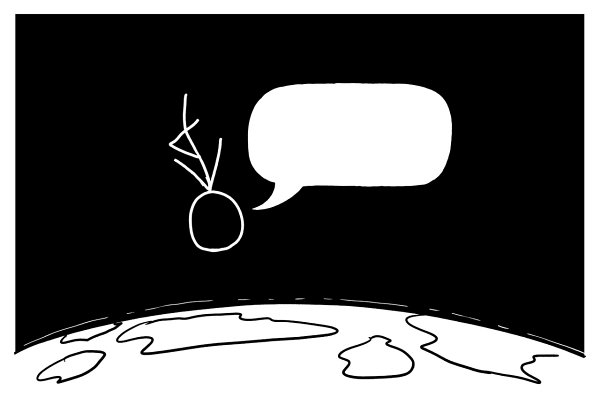
Human Computer
Q.
How much computing power could we could achieve if the entire world population stopped whatever we are doing right now and started doing calculations?How would it compare to a modern-day computer or smartphone?
—Mateusz Knorps
A.
On one hand, humans
and computers do very different types of thinking, so comparing them is like comparing apples and oranges.

On the other hand, apples are better.
1
Let’s try directly comparing humans and computers at the same tasks.
It’s easy, though getting harder every day, to invent tasks that a single human can do faster than all the computers in the world. Humans, for example, are probably still far better at looking at a picture of a scene and guessing what just happened:
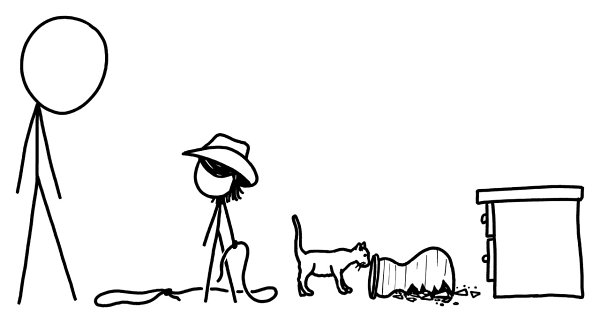
To test this theory, I sent this picture to my mother and asked her what
she
thought had happened. She immediately replied,
2
“
Th
e kid knocked over the vase and the cat is investigating.”
She cleverly rejected alternate hypotheses, including:
- Th
e cat knocked over the vase. - Th
e cat jumped out of the vase at the kid. - Th
e kid was being chased by the cat and tried
to climb up the dresser with a rope to escape. - Th
ere’s a wild cat in the house, and someone threw a vase at it. - Th
e cat was mummified in the vase, but arose when the kid touched it with a magic rope. - Th
e rope holding the vase broke and the cat is trying to put it back together. - Th
e vase exploded, attracting a child and a cat.
Th
e child put on the hat for protection from future
explosions. - Th
e kid and cat are running around trying to catch a snake.
Th
e kid finally caught it and tied a knot in it.
All the computers in the world couldn’t figure out the correct answer faster than any one parent could. But that’s because computers haven’t been programmed to figure that kind of thing out,
3
whereas brains have been trained by millions of years of evolution to be
good at figuring out what other brains around them are doing and why.
So we could choose a task to give the humans an advantage, but that’s no fun; computers are limited by our ability to program them, so we’ve got a built-in advantage.
Instead, let’s see how we compete on their turf.
The complexity of microchips
Rather than making up a new task, we’ll simply apply the same benchmark
tests to humans that we do to computers.
Th
ese usually consist of things like floating point math, saving and recalling numbers, manipulating strings of letters, and basic logical calculations.
According to computer scientist Hans Moravec, a human running through computer chip benchmark calculations by hand, using pencil and paper, can carry out the equivalent of one full instruction every
minute and a half.
4
By this measure, the processor in a midrange mobile phone could do calculations about 70 times faster than the entire world population. A new high-end desktop PC chip would increase that ratio to 1500.
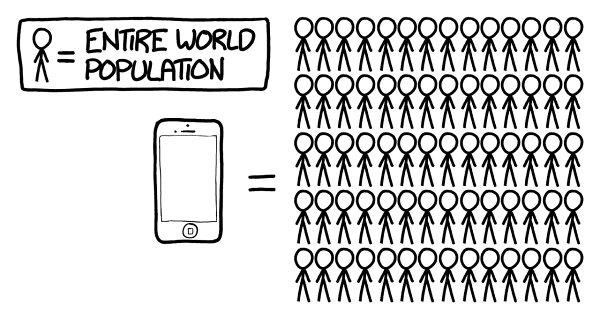
So, what year did a single typical desktop computer surpass the combined processing power of humanity?
1994.
In 1992, the world population was 5.5 billion people, which means their combined computing power by our benchmark test was about 65 MIPS (million instructions per second).
Th
at same year, Intel released the popular
486DX
, which in its default configuration achieved
about 55 or 60 MIPS. By 1994, Intel’s new Pentium chips were achieving benchmark scores in the 70s and 80s, leaving humanity in the dust.
You might argue that we’re being a little unfair to the computers. After all, these comparisons are one computer against all humans. How do all humans stack up against
all
computers?
Th
is is tough to calculate. We can easily come up with benchmark scores
for various types of computers, but how do you measure the instructions per second of, say, the chip in a Furby?
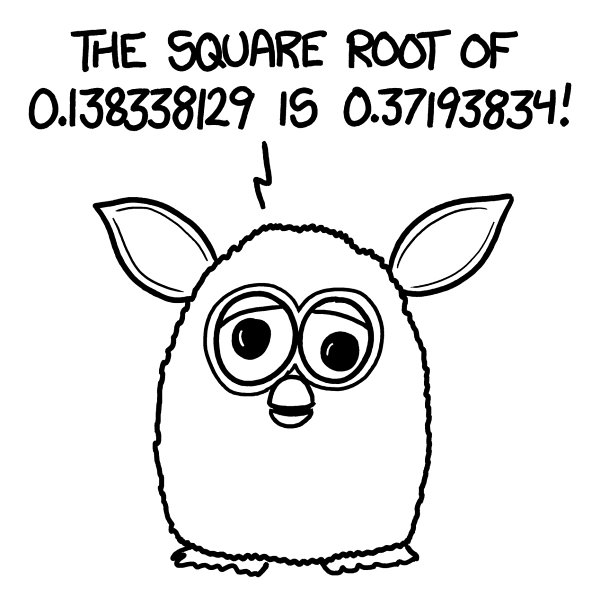
Most of the transistors in the world are in microchips not designed to run these tests. If we’re assuming that all humans are being modified (trained) to carry out the benchmark calculations, how much effort should we spend to modify each computer chip so it can run the benchmark?
To avoid this problem, we can instead estimate the aggregate power of all the world’s computing
devices by counting transistors. It turns out that processors from the 1980s and processors from today have a roughly similar ratio of transistors to MIPS
—
about 30 transistors per instruction per second, give or take an order of magnitude.
A paper by Gordon Moore (of Moore’s law fame) gives figures for the total number of transistors manufactured per year since the 1950s. It looks something
like this:
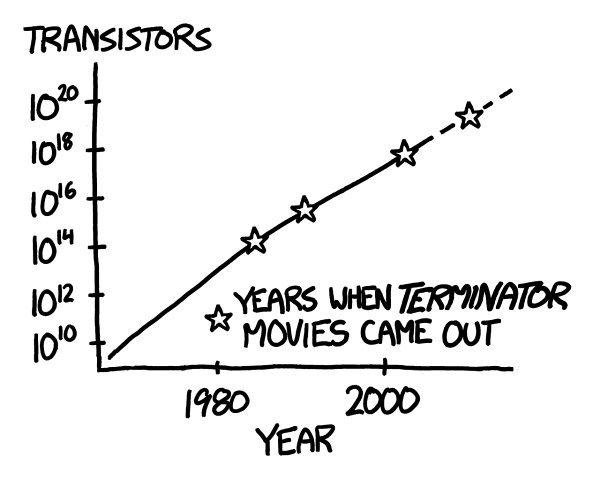
Using our ratio, we can convert the number of transistors to a total amount of computing power.
Th
is tells us that a typical modern laptop, which has a benchmark score in the tens of thousands of MIPS, has more computing power than existed in the entire world in 1965. By that measure, the year when the combined power of computers finally pulled ahead of the combined computing power
of humans was
1977.
The complexity of neurons
Again, making people do pencil-and-paper
CPU
benchmarks is a
phenomenally
silly way to measure human computing power. Measured by complexity, our brains are more sophisticated than any supercomputer. Right?
Right. Mostly.
Th
ere are projects that attempt to use supercomputers to fully simulate a brain at the level of individual synapses.
5
If we look at how many processors and how much time these simulations require, we can come up with a figure for the number of transistors required to equal the complexity of the human brain.
Th
e numbers from a 2013 run of the Japanese
K
supercomputer suggest a figure of 10
15
transistors per human brain.
6
By this measure, it wasn’t until the year 1988 that all the logic circuits in the world
added up to the complexity of a single brain . . . and the total complexity of all our circuits is still dwarfed by the total complexity of all brains. Under Moore’s law–based projections, and using these simulation figures, computers won’t pull ahead of humans until the year
2036.
7
Why this is ridiculous
Th
ese two ways of benchmarking the brain represent opposite ends of a spectrum.
One, the pencil-and-paper Dhrystone benchmark, asks
humans
to manually simulate individual operations on a
computer
chip, and finds humans perform about 0.01 MIPS.
Th
e other, the supercomputer neuron simulation project, asks
computers
to simulate individual neurons firing in a
human
brain, and finds humans perform about the equivalent of 50,000,000,000 MIPS.
A slightly better approach
might be to combine the two estimates.
Th
is actually makes a strange sort of sense. If we assume our computer programs are about as inefficient at simulating human brain activity as human brains are at simulating computer chip activity, then maybe a more fair brain power rating would be the geometric mean of the two numbers.
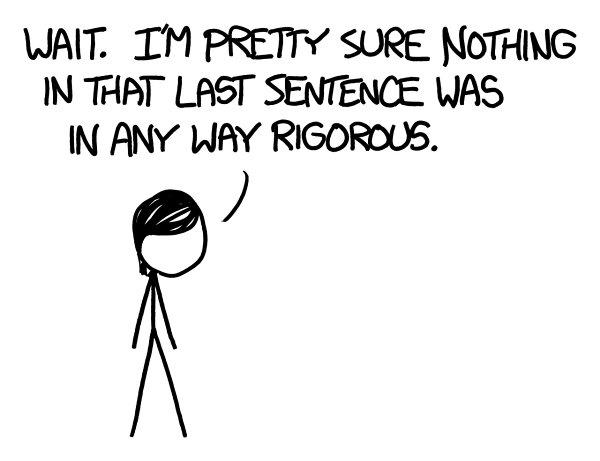
Th
e combined figure suggests human brains clock in at about 30,000 MIPS
—
right about on par with the computer on which I’m typing these words. It also suggests that the year when Earth’s digital complexity overtook its human neurological complexity was
2004.
Ants
In his paper “
Moore’s Law at 40,”
Gordon Moore makes an interesting observation. He points out that, according
to biologist E. O. Wilson, there are 10
15
to 10
16
ants in the world. By comparison, in 2014 there were about 10
20
transistors in the world, or tens of thousands of transistors per ant.
8